
Puebla: The Heart of Mexican Tradition and Culture
Discover Puebla: A city of colonial charm, culinary delights, and vibrant culture in the heart of Mexico.
Nestled in the highlands of central Mexico, Puebla is a city rich in history, culture, and colonial charm. Known for its stunning architecture, vibrant markets, and delicious cuisine, Puebla offers a unique blend of past and present. The city's elegant colonial buildings, many of which are adorned with intricate Talavera tiles, make every street a visual delight. In the historic center, visitors can explore the impressive Puebla Cathedral and the magnificent Biblioteca Palafoxiana, one of the oldest libraries in the Americas. Food lovers will find Puebla a paradise, as it is the birthplace of some of Mexico's most famous dishes, including mole poblano and chiles en nogada. The city's bustling markets, such as El Parian and Mercado de Sabores Poblanos, are perfect for sampling local delicacies and purchasing traditional crafts. The vibrant street life, with its many festivals and events, adds to the city's lively atmosphere. Beyond the city, the surrounding landscape offers numerous opportunities for adventure. The nearby Popocatépetl and Iztaccíhuatl volcanoes provide a stunning backdrop and are popular for hiking and exploring. Additionally, the Great Pyramid of Cholula, one of the largest pyramids in the world, is just a short drive away, offering a fascinating glimpse into pre-Hispanic history. Puebla's blend of cultural heritage, culinary delights, and natural beauty makes it an ideal destination for travelers seeking an authentic Mexican experience.
Local tips in Puebla
- Visit the city during one of its many festivals, such as Cinco de Mayo, to experience local traditions and celebrations.
- Try the local street food, especially cemitas and tacos árabes, for a true taste of Puebla's culinary heritage.
- Wear comfortable shoes, as many of the attractions are within walking distance in the historic center.
- Take a day trip to Cholula to see the Great Pyramid and enjoy the view of the surrounding volcanoes.
- Learn a few basic Spanish phrases to help navigate local markets and interact with locals.
Puebla: The Heart of Mexican Tradition and Culture
Nestled in the highlands of central Mexico, Puebla is a city rich in history, culture, and colonial charm. Known for its stunning architecture, vibrant markets, and delicious cuisine, Puebla offers a unique blend of past and present. The city's elegant colonial buildings, many of which are adorned with intricate Talavera tiles, make every street a visual delight. In the historic center, visitors can explore the impressive Puebla Cathedral and the magnificent Biblioteca Palafoxiana, one of the oldest libraries in the Americas. Food lovers will find Puebla a paradise, as it is the birthplace of some of Mexico's most famous dishes, including mole poblano and chiles en nogada. The city's bustling markets, such as El Parian and Mercado de Sabores Poblanos, are perfect for sampling local delicacies and purchasing traditional crafts. The vibrant street life, with its many festivals and events, adds to the city's lively atmosphere. Beyond the city, the surrounding landscape offers numerous opportunities for adventure. The nearby Popocatépetl and Iztaccíhuatl volcanoes provide a stunning backdrop and are popular for hiking and exploring. Additionally, the Great Pyramid of Cholula, one of the largest pyramids in the world, is just a short drive away, offering a fascinating glimpse into pre-Hispanic history. Puebla's blend of cultural heritage, culinary delights, and natural beauty makes it an ideal destination for travelers seeking an authentic Mexican experience.
When is the best time to go to Puebla?
Iconic landmarks you can’t miss
Zócalo de Puebla
Discover the vibrant culture and rich history of Puebla at Zócalo de Puebla, the city's stunning central square filled with charm and local flavor.

Historic Zone of the Forts
Discover the Historic Zone of the Forts in Puebla, Mexico - where history meets nature in a stunning park that captivates every visitor.

Estrella de Puebla
Discover breathtaking views and vibrant culture at Estrella de Puebla, one of Latin America's tallest Ferris wheels.

Parian market
Discover the vibrant Parian Market in Puebla, where local craftsmanship, delicious cuisine, and rich cultural experiences come together.

Teleférico Puebla
Discover Puebla from above with a scenic ride on the Teleférico, offering breathtaking views of the historic city and surrounding landscapes.

Alley of the frogs
Experience Puebla's charm at the Alley of the Frogs, a vibrant tourist attraction filled with art, history, and delightful frog sculptures.

Museo Nacional de los Ferrocarriles Mexicanos
Discover the fascinating history of Mexico's railroads at the Museo Nacional de los Ferrocarriles Mexicanos in Puebla, a cultural gem for all travelers.

Biblioteca Palafoxiana
Explore the Biblioteca Palafoxiana in Puebla, a UNESCO World Heritage Site filled with history, stunning architecture, and a vast collection of rare books.

Puente de Bubas
Experience the rich history and stunning architecture of the Puente de Bubas, a must-visit museum in Puebla's Barrio de la Luz.
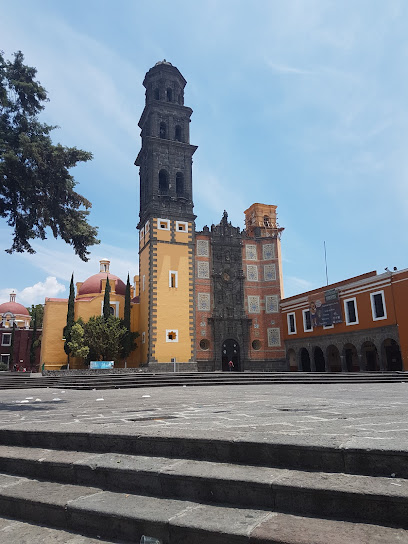
Pasaje Histórico 5 de Mayo
Discover Puebla's rich history and culture at Pasaje Histórico 5 de Mayo, a captivating museum showcasing art, artifacts, and historical narratives.

Loreto Fort Museum
Explore Puebla's Loreto Fort Museum for an insightful journey into Mexico's fight for independence and rich cultural heritage.
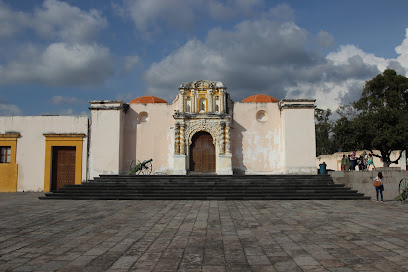
Ovando's Bridge
Discover the architectural beauty and historical significance of Ovando's Bridge, a must-visit landmark in Puebla, Mexico, for all travel enthusiasts.

Centro Historico, Puebla
Discover the rich history and vibrant culture of Centro Histórico, Puebla—a UNESCO World Heritage site filled with stunning architecture and local flavors.
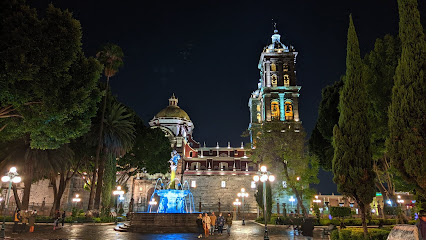
Museo Casa de Alfeñique
Explore the rich cultural heritage of Puebla at Museo Casa de Alfeñique, where art, history, and stunning architecture converge.

Guadalupe Fort Museum
Explore the historical significance of Mexico at the Guadalupe Fort Museum, where military heritage and culture intertwine in a captivating setting.

Unmissable attractions to see
Zócalo de Puebla
Discover the vibrant heart of Puebla at Zócalo de Puebla, a UNESCO World Heritage site filled with culture, history, and culinary delights.
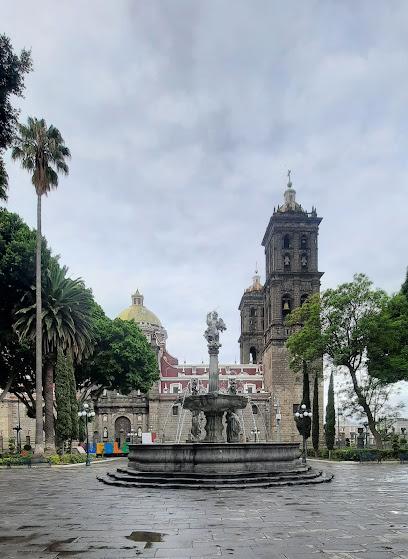
Historic Zone of the Forts
Discover the Historic Zone of the Forts in Puebla, where rich history meets stunning landscapes in a unique tourist attraction.
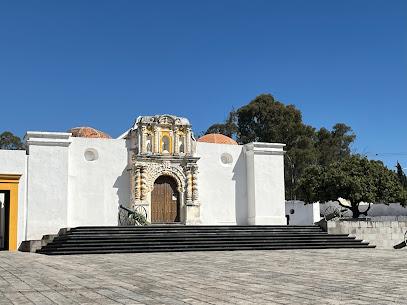
Zona Arqueológica de Cholula
Discover the ancient treasures of Cholula's archaeological site, featuring the world's largest pyramid and breathtaking views of Puebla's landscape.
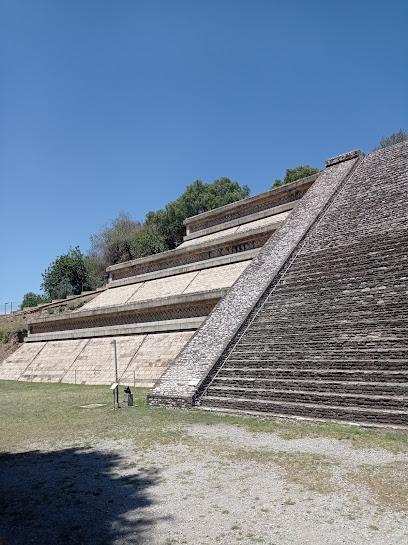
Estrella de Puebla
Discover stunning views and vibrant landscapes at the Estrella de Puebla, a must-see attraction in the heart of Puebla, Mexico.

Africam Safari
Discover the wonders of Africam Safari in Puebla, Mexico, where adventure and wildlife conservation come together in a breathtaking natural setting.

Val'Quirico
Experience the magical blend of medieval charm and modern luxury at Val'Quirico, a unique resort hotel in Tlaxcala, Mexico.

Zócalo de Atlixco
Discover the vibrant heart of Atlixco at Zócalo de Atlixco, where culture, flowers, and flavors come together in a picturesque setting.

Paseo Bravo
Discover the charm of Paseo Bravo, Puebla's serene park filled with fountains, monuments, and delicious street food, perfect for relaxation and cultural exploration.

Ex-Hacienda de Chautla
Visit Ex-Hacienda de Chautla for a unique blend of history, nature, and culture in Puebla, Mexico. Experience the serene beauty and rich heritage.

Plaza de la Concordia
Explore the vibrant atmosphere of Plaza de la Concordia, a cultural gem in San Andrés Cholula, surrounded by history, food, and local charm.

Catedral de Puebla
Discover the awe-inspiring beauty of Catedral de Puebla, a Baroque architectural gem and a vital cultural landmark in Mexico's historic heart.

Parque del Arte
Explore the artistic charm and serene landscapes of Parque del Arte, a must-see attraction in Puebla, Mexico for art lovers and nature enthusiasts.

Exhibitor Center Puebla
Discover the dynamic Exhibitor Center Puebla, where culture, business, and community converge in the heart of Mexico's historic Puebla.
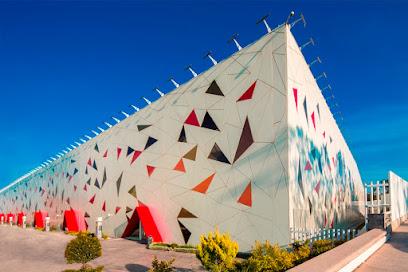
Museo Internacional del Barroco
Explore the exquisite collections of the Museo Internacional del Barroco in Puebla, where art meets history in a stunning architectural setting.
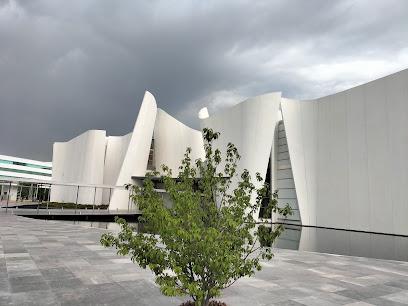
Capilla del Rosario, Templo de Santo Domingo
Discover the breathtaking beauty of the Capilla del Rosario in Puebla, a baroque masterpiece and a sanctuary of art and history.

Essential places to dine
Mural de los Poblanos
Experience authentic Mexican cuisine amidst stunning murals in Puebla's vibrant dining scene.

Mochomos Puebla
Experience the vibrant flavors of Mexico at Mochomos Puebla, where culinary tradition meets modern elegance in every dish.

La Casa del Mendrugo
Discover La Casa del Mendrugo: A culinary gem in Puebla offering authentic Mexican cuisine alongside captivating live jazz performances.

El Viejo Rosario
Discover authentic Mexican breakfast at El Viejo Rosario in Puebla's historic center—where tradition meets flavor.

Prime Steak House Ave. Juárez
Discover exquisite flavors at Prime Steak House in La Paz—where every meal is a celebration of high-quality meats and exceptional service.

Animal Puebla
Experience culinary excellence at Animal Puebla where Mexican flavors meet Japanese artistry in an unforgettable dining experience.

Fonda de Santa Clara
Discover authentic Mexican breakfast at Fonda de Santa Clara in Puebla's historic center—where tradition meets flavor.

Restaurante Casareyna
Experience the rich flavors of authentic Mexican cuisine at Restaurante Casareyna in Puebla, where every dish tells a story.

El Parrillaje
Experience authentic Mexican cuisine at El Parrillaje in Puebla - where tradition meets flavor in every dish.

El Anafre Rojo
Experience authentic Mexican flavors at El Anafre Rojo in Puebla's historic center—where tradition meets culinary excellence.

Comal
Experience authentic Mexican cuisine at Comal in Puebla - where tradition meets innovation in every dish.

Mi Viejo Pueblito
Discover the authentic flavors of Mexico at Mi Viejo Pueblito – your ultimate breakfast destination in Puebla.

Áttico 303
Experience the vibrant flavors and stunning views at Áttico 303 in Puebla, where culinary excellence meets breathtaking ambiance.

Casa Barroca
Experience exquisite fine dining at Casa Barroca in Puebla, where traditional Mexican cuisine meets modern culinary artistry.

Santóua Gastrobar
Experience innovative Mexican cuisine at Santóua Gastrobar in Puebla - where tradition meets contemporary flair for unforgettable meals.

Markets, malls and hidden boutiques
Zócalo de Puebla
Discover the pulse of Puebla at Zócalo de Puebla, a beautiful square rich in history, culture, and vibrant local life.

Parque Puebla
Explore Parque Puebla, a vibrant shopping mall offering a delightful blend of retail, dining, and family-friendly entertainment in Heroica Puebla de Zaragoza.

Galerías Serdán
Experience shopping, dining, and entertainment all in one place at Galerías Serdán, Puebla's premier shopping destination.

Parian market
Explore Parian Market in Puebla: A vibrant hub of artisanal crafts and delicious local cuisine, showcasing the rich cultural heritage of Mexico.

Explanada Puebla
Discover the vibrant shopping scene at Explanada Puebla, where culture meets commerce in a delightful retail experience.

Outlet Puebla Premier
Discover unbeatable deals at Outlet Puebla Premier, the premier shopping destination in Puebla, Mexico, featuring top brands at outlet prices.

Paseo San Francisco
Discover the vibrant shopping experience at Paseo San Francisco in Puebla, where local culture meets global brands in a lively atmosphere.

Angelópolis Lifestyle Center
Discover luxury shopping and vibrant entertainment at Angelópolis Lifestyle Center in Puebla, Mexico - a must-visit destination for every traveler.

Via San Ángel
Explore Via San Ángel, Puebla's premier shopping mall, featuring diverse shops, exquisite dining, and vibrant entertainment for an unforgettable experience.

Palmas Plaza
Discover Palmas Plaza, Puebla's ultimate shopping destination, featuring a wide variety of stores, delightful dining options, and family-friendly entertainment.
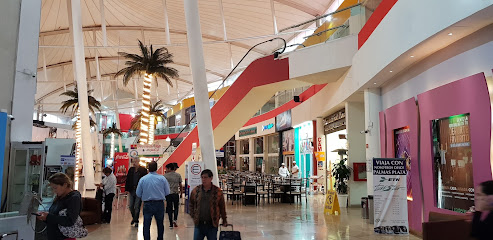
Alley of the frogs
Experience the charm of Puebla at the Alley of the Frogs, where art, culture, and culinary delights intertwine in a vibrant atmosphere.

Calle de dulces de Sta. Clara
Explore Calle de Dulces de Sta. Clara in Puebla, where traditional sweets meet vibrant culture in a delightful candy wonderland.

Luxury Hall
Discover Luxury Hall in Puebla: Indulge in top-tier brands, exquisite dining, and an ambiance that elevates your shopping experience.

Palabra Viva
Explore Palabra Viva, a charming Christian bookstore in Puebla, offering a vast collection of literature, children's books, and church supplies in a welcoming atmosphere.

Black Cat & Black Rabbit Coffee Shop
Discover the enchanting Black Cat & Black Rabbit Coffee Shop in Puebla, where exceptional coffee meets cozy ambiance in the heart of Mexico's historic center.
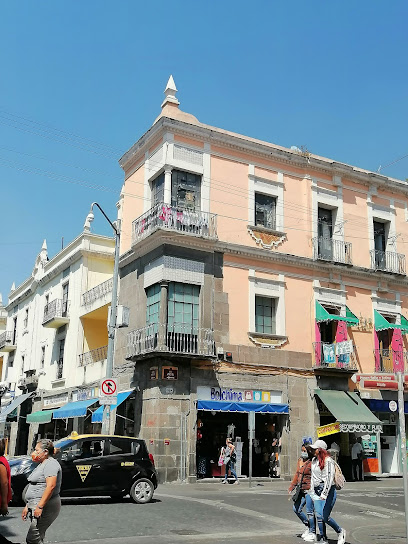
Essential bars & hidden hideouts
SuFrida
Discover the vibrant atmosphere of SuFrida, a bar in Puebla that blends local flavors with a lively nightlife experience.

The Tavern Pub & Grill
Experience the vibrant flavors of Puebla at The Tavern Pub & Grill, where grilled delights meet a lively bar atmosphere for an unforgettable dining experience.

Cerveceria El Negrito
Experience the lively atmosphere and local flavors at Cerveceria El Negrito, Puebla's premier bar for travelers seeking a taste of authentic Mexican nightlife.

BULL McCABE
Discover Bull McCabe: Puebla's premier Irish pub blending traditional cuisine, lively entertainment, and a welcoming atmosphere for all visitors.

Breve Espacio Puebla
Experience the vibrant blend of gastronomy and art at Breve Espacio Puebla, a cultural bar that entertains and delights.

San Pedrito Licorería
Discover the vibrant nightlife and local flavors at San Pedrito Licorería in historic Puebla, where every drink tells a story.

Kingston Pub
Discover Kingston Pub, Puebla's vibrant bar with a lively atmosphere, great drinks, and delicious snacks in the historic center.

Bar La Terminal
Explore Puebla's vibrant nightlife at Bar La Terminal, where affordable drinks and a friendly atmosphere await every traveler.

Utopia, Belgian Beer & Bistro
Experience the charm of Belgium in Puebla at Utopia, where craft beer and bistro cuisine create unforgettable moments.

Secret Coffee & Beer
Experience the unique fusion of artisanal coffee and craft beer at Secret Coffee & Beer in the heart of Puebla, a must-visit for every traveler.

Hormiga Negra Bar
Discover the lively atmosphere and innovative cocktails at Hormiga Negra Bar in Puebla, where great vibes and friendly service await.

La Fuga de Don Porfirio
Experience Puebla's vibrant nightlife at La Fuga de Don Porfirio, a charming bar offering affordable drinks and a lively atmosphere in the historic center.

Beer Bar Historical Center
Explore Puebla's rich beer culture at the Beer Bar Historical Center, where history meets flavor in a lively atmosphere.

El ídolo de México Centro
Discover the vibrant nightlife of Puebla at El Ídolo de México, where local drinks and lively atmosphere create unforgettable memories.
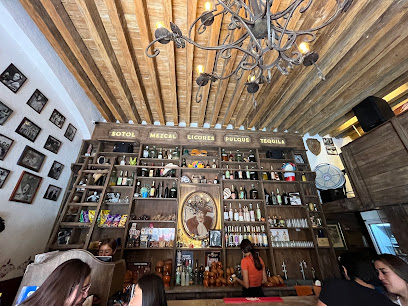
Bootlegger
Experience the vibrant nightlife and unique cocktails at Bootlegger Bar, a must-visit destination in La Paz, Puebla.

Local Phrases
-
- HelloHola
[oh-lah] - GoodbyeAdiós
[ah-dee-ohs] - YesSí
[see] - NoNo
[noh] - Please/You're welcomePor favor/De nada
[por fah-vohr/deh nah-dah] - Thank youGracias
[grah-see-ahs] - Excuse me/SorryPerdón/Lo siento
[pehr-dohn/loh see-ehn-toh] - How are you?¿Cómo estás?
[koh-moh ehs-tahs] - Fine. And you?Bien. ¿Y tú?
[byen. ee too] - Do you speak English?¿Hablas inglés?
[ah-blahs een-glehs] - I don't understandNo entiendo
[noh ehn-tyen-doh]
- HelloHola
-
- I'd like to see the menu, pleaseQuisiera ver el menú, por favor
[kee-syeh-rah vehr ehl meh-noo, pohr fah-vohr] - I don't eat meatNo como carne
[noh koh-moh kahr-neh] - Cheers!¡Salud!
[sah-lood] - I would like to pay, pleaseMe gustaría pagar, por favor
[meh goo-stah-ree-ah pah-gahr, pohr fah-vohr]
- I'd like to see the menu, pleaseQuisiera ver el menú, por favor
-
- Help!¡Ayuda!
[ah-yoo-dah] - Go away!¡Vete!
[veh-teh] - Call the Police!¡Llama a la policía!
[yah-mah ah lah poh-lee-see-ah] - Call a doctor!¡Llama a un médico!
[yah-mah ah oon meh-dee-koh] - I'm lostEstoy perdido
[ehs-toy pehr-dee-doh] - I'm illEstoy enfermo
[ehs-toy ehn-fehr-moh]
- Help!¡Ayuda!
-
- I'd like to buy...Quisiera comprar...
[kee-syeh-rah kohm-prahr] - I'm just lookingSólo estoy mirando
[soh-loh ehs-toy mee-rahn-doh] - How much is it?¿Cuánto cuesta?
[kwan-toh kwehs-tah] - That's too expensiveEso es demasiado caro
[eh-soh ehs deh-mah-syah-doh kah-roh] - Can you lower the price?¿Puedes bajar el precio?
[pweh-dehs bah-hahr ehl preh-syoh]
- I'd like to buy...Quisiera comprar...
-
- What time is it?¿Qué hora es?
[keh oh-rah ehs] - It's one o'clockEs la una
[ehs lah oo-nah] - Half past (10)Media (10)
[meh-dyah (diez)] - MorningMañana
[mah-nyah-nah] - AfternoonTarde
[tahr-deh] - EveningNoche
[noh-cheh] - YesterdayAyer
[ah-yehr] - TodayHoy
[oy] - TomorrowMañana
[mah-nyah-nah] - 1Uno
[oo-noh] - 2Dos
[dohs] - 3Tres
[trehs] - 4Cuatro
[kwah-troh] - 5Cinco
[seen-koh] - 6Seis
[says] - 7Siete
[syeh-teh] - 8Ocho
[oh-choh] - 9Nueve
[nweh-veh] - 10Diez
[dyehs]
- What time is it?¿Qué hora es?
-
- Where's a/the...?¿Dónde está...?
[dohn-deh ehs-tah] - What's the address?¿Cuál es la dirección?
[kwal ehs lah dee-rehk-syon] - Can you show me (on the map)?¿Puedes mostrarme (en el mapa)?
[pweh-dehs mohs-trar-meh (ehn ehl mah-pah)] - When's the next (bus)?¿Cuándo es el próximo (autobús)?
[kwan-doh ehs ehl proh-ksee-moh (ow-toh-boos)] - A ticket (to ....)Un boleto (a ...)
[oon boh-leh-toh (ah ...)]
- Where's a/the...?¿Dónde está...?
History of Puebla
-
Puebla, officially known as Puebla de Zaragoza, was founded on April 16, 1531, by Spanish settlers. It was strategically located between the port of Veracruz and Mexico City, serving as a crucial link for trade and communication during the Spanish colonial period. The city's layout was meticulously planned, featuring a grid pattern that reflected Renaissance urban design principles.
-
The Battle of Puebla took place on May 5, 1862, during the French intervention in Mexico. Despite being outnumbered, Mexican forces led by General Ignacio Zaragoza successfully defended the city against the French army. This victory is commemorated every year on Cinco de Mayo, which has become a symbol of Mexican resistance and pride.
-
Puebla is renowned for its well-preserved colonial architecture, earning it the status of a UNESCO World Heritage Site in 1987. The city is home to numerous colonial-era buildings, including the Puebla Cathedral, which took nearly 300 years to complete and is a prime example of Spanish Baroque architecture. The city’s streets are lined with colorful Talavera-tiled buildings, showcasing the unique blend of indigenous and European influences.
-
Talavera pottery is one of Puebla’s most iconic cultural artifacts. Originating in the 16th century, this earthenware is known for its bright colors and intricate designs, often featuring floral and geometric patterns. Talavera pottery is still produced using traditional methods passed down through generations, making it a tangible link to the city’s past.
-
Just outside Puebla lies Cholula, home to the Great Pyramid of Cholula, the largest pyramid by volume in the world. This pre-Columbian site dates back to at least the 3rd century BC and was an important religious and cultural center for the indigenous civilizations that inhabited the region. Today, the pyramid’s base is topped by the Church of Our Lady of Remedies, built by Spanish colonizers, symbolizing the layered history of the area.
-
Mole Poblano is a rich, complex sauce made from a blend of chili peppers, spices, chocolate, and other ingredients, and is one of Puebla’s most famous culinary contributions. Legend has it that the dish was created by nuns at the Convent of Santa Rosa in the 17th century. It is traditionally served over turkey or chicken and remains a staple of Mexican cuisine, especially during festivals and celebrations.
-
During the Mexican War of Independence (1810-1821), Puebla played a significant role in the struggle against Spanish rule. The city was a strategic military target due to its location and resources. Notable events include the Siege of Puebla in 1821, which ultimately led to the city’s capture by insurgent forces, marking a turning point in the fight for independence.
-
On September 19, 2017, a powerful earthquake struck central Mexico, causing significant damage to Puebla and surrounding areas. The quake resulted in the loss of lives and the destruction of historical buildings and infrastructure. The event highlighted the resilience of the Pueblan people as they came together to rebuild and preserve their cultural heritage.
Puebla Essentials
-
Puebla is well-connected by various modes of transportation. The nearest international airport is Hermanos Serdán International Airport (PBC), approximately 25 kilometers from the city center. Major airlines operate flights to and from this airport. Alternatively, you can fly into Mexico City International Airport (MEX) and take a bus or hire a car for the 2-hour drive to Puebla. Buses are frequent and comfortable, with companies like ADO and Estrella Roja offering services from Mexico City to Puebla.
-
Puebla has a robust public transportation system, including buses, minibuses (combis), and taxis. The city is also pedestrian-friendly, with many attractions within walking distance in the historic center. For longer distances, consider using ride-hailing apps like Uber or Didi. Car rentals are available but be mindful of local driving conditions and traffic rules. Puebla's Estrella Roja bus terminal provides efficient intercity travel options.
-
The official currency in Mexico is the Mexican Peso (MXN). Credit and debit cards are widely accepted in hotels, restaurants, and larger stores. However, it's advisable to carry some cash for smaller establishments, markets, and tips. ATMs are plentiful, especially in the city center and shopping areas. Currency exchange services are available at airports, banks, and exchange bureaus.
-
Puebla is generally safe for tourists, but it's important to take standard precautions. Avoid displaying valuable items and be cautious in crowded places. Neighborhoods like the historic center (Centro Histórico) are usually safe during the day, but it's advisable to avoid walking alone at night. Areas like La Margarita and San Pablo Xochimehuacán have higher crime rates and should be avoided, especially after dark. Always use official taxis or ride-hailing services.
-
In case of emergency, dial 911 for immediate assistance. Puebla has several hospitals and clinics, including Hospital Ángeles and Hospital UPAEP, which offer high-quality medical care. Pharmacies are widely available for minor health issues. It's advisable to have travel insurance that covers medical emergencies. For lost or stolen items, contact the local police station and your embassy or consulate for assistance.
-
Fashion: Do dress conservatively, especially when visiting religious sites. Avoid wearing overly revealing clothing. Religion: Do show respect for local customs and traditions. Always cover your head when entering churches. Public Transport: Do be respectful and offer your seat to elderly passengers. Don't eat or drink on public transport. Greetings: Do greet people with a handshake and say 'Hola' (Hello). A slight bow of the head is also a sign of respect. Eating & Drinking: Do try local delicacies and accept food offerings graciously. Don’t refuse hospitality, as it is considered impolite.
-
To experience Puebla like a local, visit El Parián Market for traditional crafts and souvenirs. Enjoy a meal at a local fonda (small restaurant) to taste authentic Puebla cuisine like mole poblano and chiles en nogada. Wander around the Zócalo (main square) and interact with locals, who are often friendly and willing to share stories about the city's history and culture. For a unique experience, try visiting during one of Puebla's many festivals, such as Cinco de Mayo or the International Festival of the Baroque.
Trending Landmark in Puebla
-
Zócalo de Puebla
-
Historic Zone of the Forts
-
Estrella de Puebla
-
Parian market
-
Teleférico Puebla
-
Alley of the frogs
-
Museo Nacional de los Ferrocarriles Mexicanos
-
Biblioteca Palafoxiana
-
Puente de Bubas
-
Pasaje Histórico 5 de Mayo
-
Loreto Fort Museum
-
Ovando's Bridge
-
Centro Historico, Puebla
-
Museo Casa de Alfeñique
-
Guadalupe Fort Museum
Nearby Cities to Puebla
-
Things To Do in Mexico City
-
Things To Do in Taxco
-
Things To Do in Veracruz
-
Things To Do in Oaxaca
-
Things To Do in Queretaro
-
Things To Do in Acapulco
-
Things To Do in San Miguel de Allende
-
Things To Do in Puerto Escondido
-
Things To Do in Guanajuato
-
Things To Do in Guadalajara
-
Things To Do in Chiapas
-
Things To Do in Ixtapa-Zihuatanejo
-
Things To Do in Puerto Vallarta
-
Things To Do in Matamoros
-
Things To Do in Brownsville













